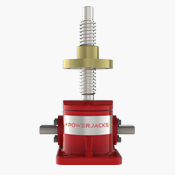
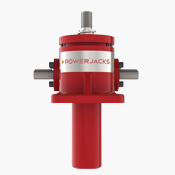
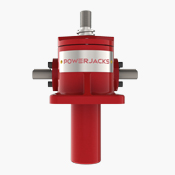
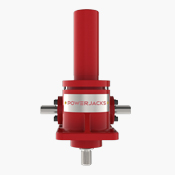
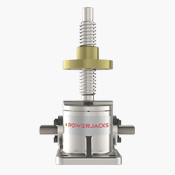
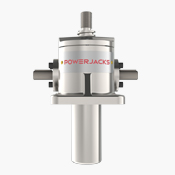
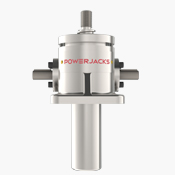
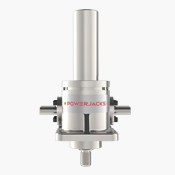
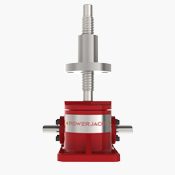
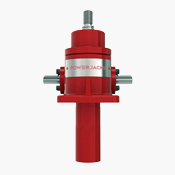
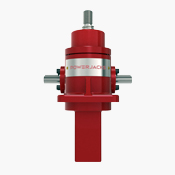
Conventional Machine Screw Jacks are the most widely used mechanical actuator for intermittent duty cycles as the actuator incorporates a precision worm gear set in a rugged casting delivering positive, precise actuation. Available in a comprehensive range of materials and fittings with the option for special designs for specific application requirements.
View our Industries page for application examples and further information.
Consider all application constraints then choose a product that looks suitable for the intended application. If you need help choosing which Screw Jack best meets your requirements then, calculate the power and torque requirements. This is a 5 step process:
View our 5 Step Machine & Ball Screw Selection Guide. You may also find our Jacking System Reference Guide useful.
View some special design examples in the Industries section.
The screw jacks can be connected together in systems so that multiple units can be operated and controlled together. These jacking system arrangements or configurations can be built in many formats with the use of bevel gearboxes, motors, reduction gearboxes, drive shafts, couplings, plummer blocks and motion control devices.
Two of the most popular system configurations are the ‘H’ and ‘U’ configured jacking systems.
Multiple screw jacks can be linked together mechanically or electrically. The latter is useful if there is no space for linking drive shafts.
If multiple machine screw jacks are connected in a mechanically linked system then the complete system may be considered self-locking. If you would like this checked please consult Power Jacks. Alternatively, to be sure, include a brake on the system either as a stand alone device or as a brake motor.
For the complete range of brochures, datasheets, videos and more go to the Downloads page